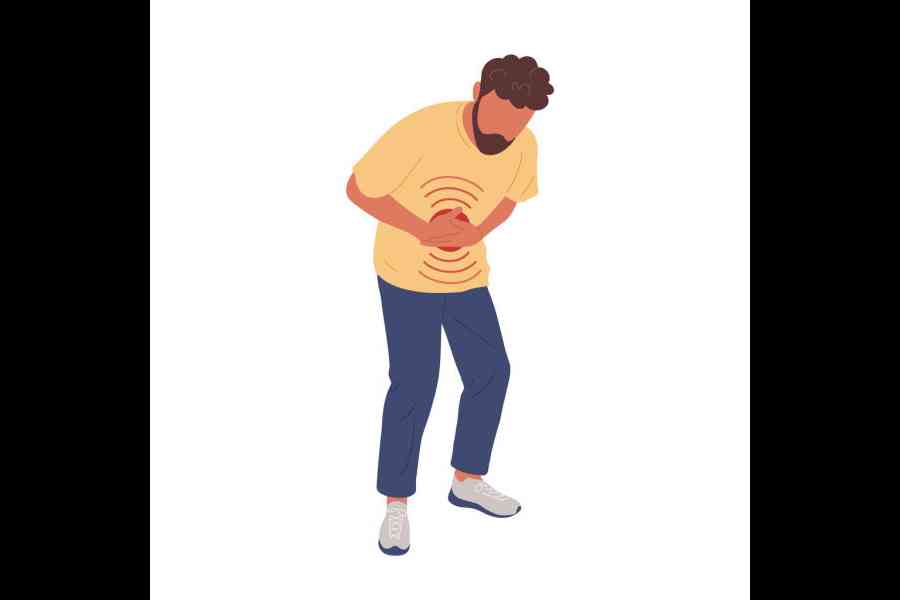People of all ages — babies, children, adults and the elderly — have attacks of upper abdominal pain. In some, it just comes and goes; in others, it is a constant and nagging presence that interferes with concentration and efficient work. It may even result in vomiting or decreased appetite and weight loss.
One of the most common causes of upper abdominal pain is what is called a “peptic ulcer”. This generic term encompasses ulcers in the lower end of the oesophagus that leads to the stomach, the stomach itself or the duodenum, the tube that leads away from the stomach to the intestines.
The stomach contains acid, which helps with digestion. However, this acid (especially if there is no food to counter it) can attack the stomach lining, oesophagus or duodenum. Since the stomach always has acid, these erosions are bathed in acid all the time and it becomes difficult for them to heal. They may progress to chronic ulcers or become refractory and not respond to treatment.
The common symptom of ulcers is pain, which is worse on an empty stomach and relieved with food. It may be worse at night. There may be bloating, intolerance to fatty foods, nausea and vomiting. The stools may be black due to altered digested blood, especially if the ulcer is bleeding. Long-standing ulcers can cause anaemia.
Contrary to popular belief, stress and spicy food do not cause ulcers. A bacterium called H. pylori causes 80 per cent of stomach ulcers and 90 per cent of duodenal ulcers. Other precipitating causes are regular use of certain painkillers or aspirin. The stomach lining also becomes sensitive to acid with smoking and alcohol consumption.
Not all stomach pain is due to peptic ulcers. It may be due to GERD (gastroesophageal reflux disease). In this condition, the acid from the stomach produces a backwash, or reflux, irritating the oesophagus. Although GERD causes upper abdominal and chest pain, it can also cause difficulty swallowing, a feeling that there is a lump in the throat, a cough, repeated attacks of laryngitis and precipitation or worsening of asthma. It may be confused with a heart attack.
The lower oesophageal sphincter is a circular band of muscular tissue at the bottom of the oesophagus. This sphincter relaxes when you swallow and then tightens again. A lax sphincter allows stomach contents to pass back into the oesophagus, inflaming it. This is more likely with obesity and a large potbelly or pregnancy. It occurs if the person eats large meals at night and sleeps immediately afterwards, or eats fatty and fried foods, smokes and consumes alcohol.
Stomach pain can be evaluated with X-rays, barium studies and an endoscopy. Tests for H. pylori are done on the breath, blood and stool. If H. pylori is present, it needs to be eradicated with a two-week course of antibiotics. Drugs like omeprazole and ranitidine reduce the production of acid, which can help in ulcer healing. Antacids can mask the pain without healing the ulcer. Ideally, antacids should not be taken for more than two weeks. Long-term use can cause digestive issues like constipation, diarrhoea, nausea, vomiting and stomach cramps, liver or kidney problems, low blood magnesium and muscle pains.
To reduce the likelihood of ulcers and GERD:
n Eat meals on time, and don’t overeat
n Do not lie down for an hour after a meal
n Exercise regularly
n Try to reduce stress
n Maintain ideal body weight
n Do not drink or smoke.
If nothing works, then surgery can be done as a last resort.
The writer has a family practice at Vellore and is the author of Staying Healthy in Modern India. If you have any questions on health issues please write to yourhealthgm@yahoo.co.in










